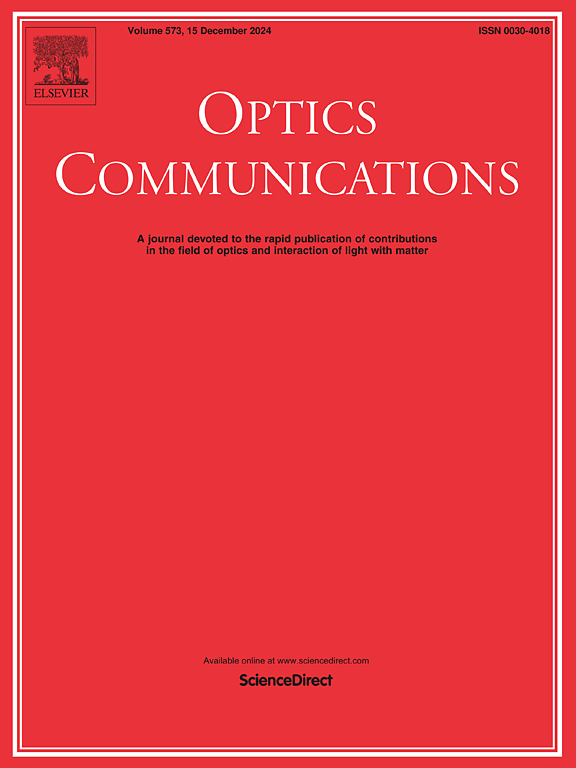利用自适应光纤耦合实现 2 千米城市大气层下自由空间光通信的实验演示
IF 2.2
3区 物理与天体物理
Q2 OPTICS
引用次数: 0
摘要
卫星到地面通信、量子通信和城市内通信都受益于自由空间光通信。将尽可能多的光功率耦合到光纤中对自由空间光通信至关重要,而大气湍流和平台摇摆会影响耦合效果。本文介绍了一种利用单个自适应光纤耦合器的自由空间光通信方案,它能以最小的成本减轻湍流和其他干扰。在 2 千米城市大气层中的实验结果表明,我们的方法可以在大部分时间内将耦合功率提高 20%。此外,在实施闭环校正后,通信误码率从 4.53 × 10-4 降低到 3.80 × 10-8,我们还演示了视频传输。此外,该方案还可与相干波束结合和空间分集技术相结合,为尖端/倾斜像差和闪烁问题提供全面的解决方案。本文章由计算机程序翻译,如有差异,请以英文原文为准。
Experimental demonstration of free-space optical communication under 2 km urban atmosphere using adaptive fiber coupling
Satellite-to-ground communication, quantum communication, and intra-city communication all benefit from free-space optical communication. Coupling as much light power as possible into optical fibers is crucial for free-space optical communication, where atmospheric turbulence and platform sway will affect the coupling effect. This paper introduces a scheme for free-space optical communication utilizing a single adaptive fiber coupler, which can mitigate turbulence and other disturbances at minimal cost. Experimental results in a 2 km urban atmosphere show that our method can increase coupling power by up to 20% for the majority of the time. Moreover, the bit error rate of communication reduces from 4.53 × 10−4 to 3.80 × 10−8 after implementing the closed-loop correction and we also demonstrate video transmission. Additionally, this scheme can be combined with coherent beam combining and spatial diversity techniques, offering a comprehensive solution to both tip/tilt aberration and scintillation issues.
求助全文
通过发布文献求助,成功后即可免费获取论文全文。
去求助
来源期刊

Optics Communications
物理-光学
CiteScore
5.10
自引率
8.30%
发文量
681
审稿时长
38 days
期刊介绍:
Optics Communications invites original and timely contributions containing new results in various fields of optics and photonics. The journal considers theoretical and experimental research in areas ranging from the fundamental properties of light to technological applications. Topics covered include classical and quantum optics, optical physics and light-matter interactions, lasers, imaging, guided-wave optics and optical information processing. Manuscripts should offer clear evidence of novelty and significance. Papers concentrating on mathematical and computational issues, with limited connection to optics, are not suitable for publication in the Journal. Similarly, small technical advances, or papers concerned only with engineering applications or issues of materials science fall outside the journal scope.
 求助内容:
求助内容: 应助结果提醒方式:
应助结果提醒方式:


